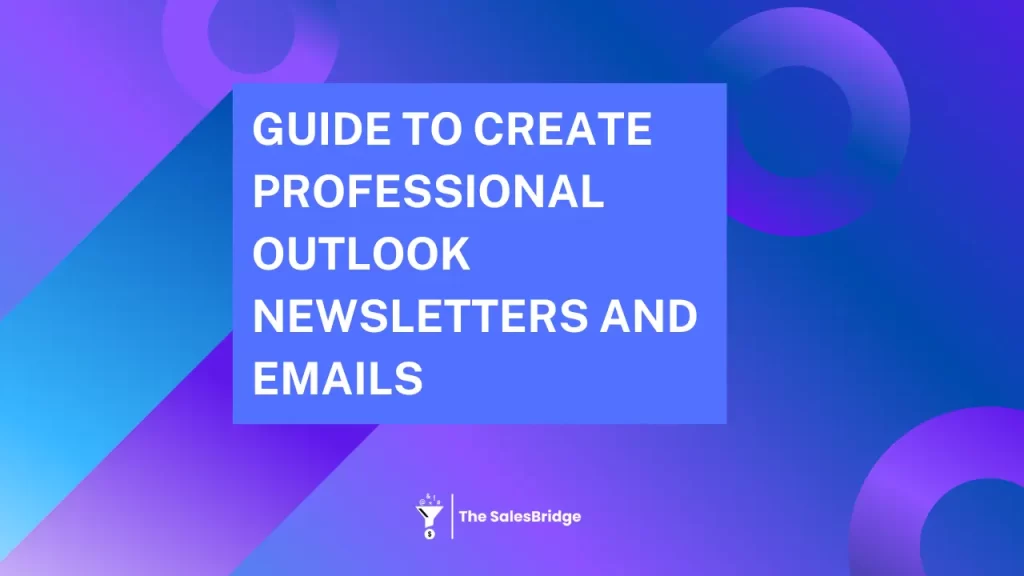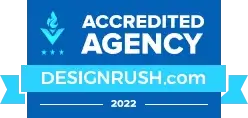Guide on email newsletter and writing emails professionally, Several studies predict that by 2023, about 4.2 billion people, about 50% of the population, will use e-mail as a means of corporate communication.
Nowadays, most brand interactions take place via emails, for instance, purchasing, follow-ups, branding, advertising, etc. According to a 2017 study by SendGrid, more than 75% of consumers prefer to communicate with brands via email. As a result, using Email Newsletters can prove to be highly advantageous to your business.
In this article, we will be taking a look at the benefits of Email Newsletters, how you can create your Outlook email templates, and a few tips that you should keep in mind if you want to write professional emails.
Table of Contents
Why Email Newsletters?
Email Newsletters have always been proven for emerging brands and start-ups when it comes to customer acquisition. It helps entrepreneurs and small businesses to interact with their target audience, understand their pain points and expectations, and build trustworthy relationships with their prospects and partnerships.
The prime idea of Email Newsletters is to keep your audience updated on what is happening with your brand or company. When writing a newsletter, it is most important to know your target audience, i.e., your external audience to whom you would address the newsletter. You can assess your audience by analyzing the number of users who subscribe or unsubscribe to your newsletter.
Here are some of the primary benefits of Email Newsletters:
- It helps to generate traffic and derive more leads
- It helps to understand your target audience’s pain points
- It helps to build a long-term and trustworthy relationship with your consumers
- It keeps readers and subscribers updated on the events happening with your brand
- It is cost-effective.
- It automates the whole process of email marketing
- Helps to build brand strategy
Now that you know what Email Newsletters are and their major benefits, let a take a look at how you can create Outlook email templates.
How Can You Create Outlook Email Templates?
Though creating and publishing frequent newsletters may look like it would require a lot of work and effort, it is definitely worth it. It is an excellent approach to minimize repetitive work and maximize efficiency. Email templates reduce your workload to a great extent.
There are two ways you can create your email templates through Microsoft Outlook:
My Templates:
A noteworthy feature of ‘My Templates’ is that they are stored in your mailbox itself. So, if you are using Outlook on any other device or Outlook on the web, you can still access your templates. For this, your ‘MyTemplates’ add-in should be turned on (it is usually turned on by default). If it is not on by default, you can go to the ‘Get Add-ins’ section where you can find ‘My add-ins’. Under it, you’ll see the ‘My Templates section. Just click on the three dots on the lower right-hand side and enable it.
When replying to an email, you will see the ‘My Templates’ section on the top right-hand side of your ribbon. After clicking on it, you’ll see all the templates that you may have saved. If you want to add another template, simply click on the ‘+ Template’ icon and add the text reply. One drawback here is that one cannot add font styles, text colors, or links. If you need to add any of these, you can write your text with your required link and styles on the word app and simply copy that text and paste it here.
Quick Parts:
Microsoft introduces this feature in Outlook 2007. With quick Parts, you can store reusable fragments or segments of content. This content can include images, texts, and even formatting. One demerit is that unlike ‘My Templates’, it is only available locally on your device or computer and does not sync automatically when logged in on another device.
When creating a template with quick parts, type out the text you require or paste it from a previous reply. Highlight the details of the text that you want to keep as the standard response. Then, go to the ‘Insert’ tab and on the right, you’ll see the ‘Quick Parts’ option. Once you click on it, you will get an option to save the selected text to the Quick Parts Gallary as a ‘Building Block’.
So, the next time you need to give the same reply, just follow the instructions:
Insert 

Alternative sites to create templates
Creating templates on Outlook can be limiting at times as you may not have much leeway when it comes to adding images, styling, choosing different fonts, and formatting.
One big solution to this problem, as mentioned before, is to type out your text in the Microsoft Word app in the style and color you desire and then paste the text into your ‘My Templates” section.
In addition to this, here are 3 alternative websites through which you can customize and create your template for free.
Tips To Keep In Mind When Writing A Professional Email
Writing a professional email can be a bit tricky. Knowing how to write a professional email helps you to showcase a positive impression of your work and communication skills.
Here are a few tips on how to write a professional email.
Keep an interesting and eye-catching subject line
The subject line indicates what the email is about. It appears in the recipient’s inbox before even opening the email. People receive plenty of emails every day. Make sure that your subject line is precise and stands out among the others. Also, ensure that your subject line is not misleading or false.
Here are some different subject lines you can use:
“It’s time to care about your frizzy hair!” {Hair care product}
“Our homes are where your heart will grow fonder” {Real Estate company}
“Managing your finances has never been easier” {Finance/Banking}
Follow a format or structure
When writing an email, always follow a particular format or structure. Greet the recipient followed by a short introduction that includes the reason why you are writing the mail. Follow it with the main body of the email which includes the details of your intent to write the email. Keep the email body detailed, yet precise. After that, conclude it with a couple of closing remarks that prompt a response from the recipient.
End it with a formal signature
When writing professional emails, always make sure to conclude it with a formal signature that includes your name, contact information, and the organization where you work at.
Know your audience
When writing an email, especially when it comes to newsletters or email marketing, always be aware of your target audience. This is important so as to know to whom you want to address your email to and what terms you must use to get leads. Make sure that your target audience understands the intentions of your email.
Keep it simple, yet professional
When writing a formal email, you need not complicate it unnecessarily. Make sure to use simple words and terminologies that the reader or recipient understands. Use formal words and keep the email short and simple.
Proofread
Always proofread or double-check your emails. Make sure that there are no spelling or grammatical errors. This can cause the recipient to have a bad impression of you. You can always modify it. Make sure that it has a neutral tone and a high readability level.
Conclusion
If you send multiple emails a day, email templates are a must-have. They help you save time, are highly cost-effective and completely streamline your email marketing process. With just a few steps, you can make your email marketing planning a whole lot easier and more efficient.
If you aim to scale your Email Marketing strategies, the Outlook newsletter Templates may be a terrific option for you. With just a few easy steps and tips, you can accelerate your marketing and sales funnel which will help your business grow and flourish.
Whether it is Lead Generation, Email Marketing, or any of your B2B Marketing needs, we are here to provide a customized and well-fitted solution for you.




